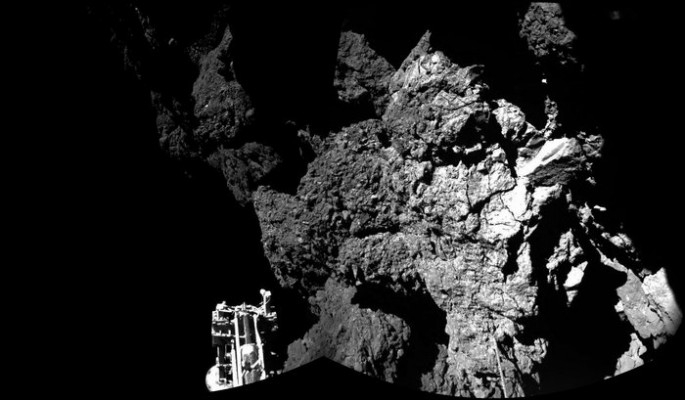After establishing contact since months, European Space Agency's Philae lander has sent a signal to Earth last Saturday and again on Sunday, June 14.
The robotic Philae has been lost on comet 67P/Churyumov-Gerasimenko since November last year where it made three short signals, each 10 seconds long at around 5:30 P.M. EST on Sunday.
ESA mission controllers revealed that the contacts were shorter than they were expecting however this is definitely proof that this tiny robotic lander is now in good health after being in hibernation for seven months.
The lander had a bumpy touchdown last November where it worked for merely 60 hours before its power ran out.
Philae had finally woken up on Saturday due to to comet 67P's closer orbit to the sun where its solar panels have finally reached sunlight in order to gain enough power to revive its systems along with its transmitter.
Since Philae is already working again, it can send signals via the Rosetta spacecraft that has been following the comet since August last year so that the lander can transmit information back to Earth.
According to chief of operations Paolo Ferri from ESA's mission control center in Darmstadt, Germany, we definitely had a another contact on Sunday night. However, the team is still trying decipher why these signals are still short. Saturday's signal was 85 seconds long and this latest series are 10 seconds each over seven minutes.
Ferri believes that this could be affected by Rosetta's positioning that may not be pointing at the right direction. Since the spacecraft is some 200 kilometers away from the comet where the link is ample enough to make a moderate connection, without proper alignment, the connection might be lost.
The comet along with Rosetta and tiny Philae are some 305 million kilometers from Earth where it can take 16 minutes for radio signals to travel in deep space.
Since comet 67P is now reaching perihelion or the closest point to the sun, mission control team is hopeful that Philae can gain enough power to run its scientific mission with surface experiments in the following weeks. Scientists believe that comets hold clues as how the solar system was formed during its infant stages.
The team believes that another opportunity to make contact with Philae will occur on Monday.



























